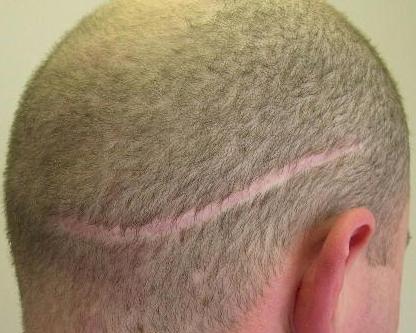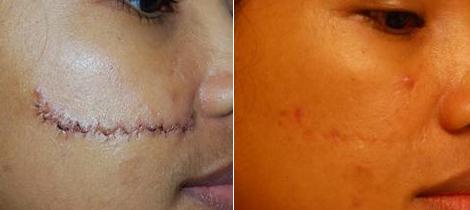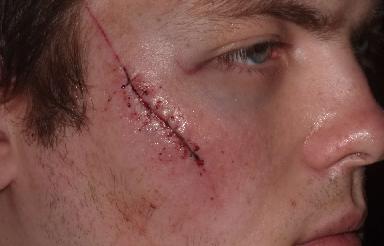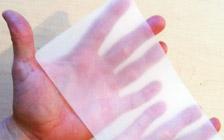
Scarring is an inevitable part of hair restoration and physicians performing hair transplants are always challenged to reduce scarring as much as they are able. The strip method which is the most popular form of hair restoration surgery requires a donor strip to be taken from the permanent zone which requires the doctor to pay close attention to wound closure and scar reduction. Some patients have suffered trauma that may have left unwanted scar. Hair, can naturally cover scars in most cases. However, when it happens to be close to the hairline or depending on the patients hair style it can be harder to cover up.
Since the advent of hair transplant surgery, hair transplant surgeons have been challenged to address the scarring that is inevitable from the donor wound in strip hair transplants. Other types of scalp surgeries such as neurological surgeries can also leave linear type scars in the scalp. In addition trauma to the head can leave a person with unwanted scar. A patient’s natural hair coverage can obscure the visibility of a scar in most cases. However, proximity to a patient’s hairline and or wearing the hair too short can make a scar more obvious.
Surgeons can repair or disguise most scars. The differences of shape as well as the placement and size of the scars will determine the technique that is used by the surgeon. The goal is to revise the scar so that it may be almost invisible. This scar revisioning is far more than a cosmetic need. Scars can affect the person’s self-esteem. Surgeons are in the forefront of minimal scarring.
Addressing scalp scarring from trauma and scalp surgeries.
A hair transplant surgeon can easily repair or camouflage most scalp scars. The variations in a scar shape, location and size are key factors affecting the techniques that a surgeon will use in the revisioning of the scar. The singular and most important purpose of the scar revisioning is to obscure or minimize its appearance to the naked eye. Scar revisioning is not merely cosmetic. Disfigurement from scarring often affects a person’s sense of well being and self worth. Do to the inherent nature of the work they do cosmetic surgeons are at the forefront of minimizing the appearance of scars. We have developed an algorithm utilized in hair restoration and other surgical cosmetic practices that effectively meets the challenge of scarring from these procedures. Many of the same techniques are also employed in addressing scalp scarring from trauma and scalp surgical procedures.
A wider scar can come to be as the result of stretching. Stretched skin can have a variation in color, different from the skin surrounding the scar. Bringing hair into the scarred area can meld this difference. Blending the contrast is the key to success. Follicular unit grafts with FUE and trichophytic closure on one or both edges of the scar is the best technique. Many people need various transplants into the scalp to better disguise the scar.
A scar that is wider than expected gives evidence that some level of stretching has occurred. Skin that is stretched typically has a contrasting color to neighboring skin. Minimizing this contrast is one of the key approaches to reducing this type of scar. Hair transplant surgeon can reduce the contrast by bringing hair inside the scar by a variety of techniques to minimize the contrast between the hair bearing scalp and non-hair bearing scar. That is done through placing follicular unit grafts with FUE procedure or by performing trichophytic closure on one or both edges of a scalp scar. Many people may need more than one hair transplant into their scalp to improve the reduction in visibility of the scar.
If you are suffering from a scalp scar, you need to find a good hair transplant surgeon with plenty of experience with treatment of scalp scars. A simple consultation would make the overall plan clear. The plan may include a surgical procedure, using cosmetics for hair and scalp and hair style changes.
Parsa Mohebi, MD
US Hair Restoration, Los Angeles, CA, USA.




